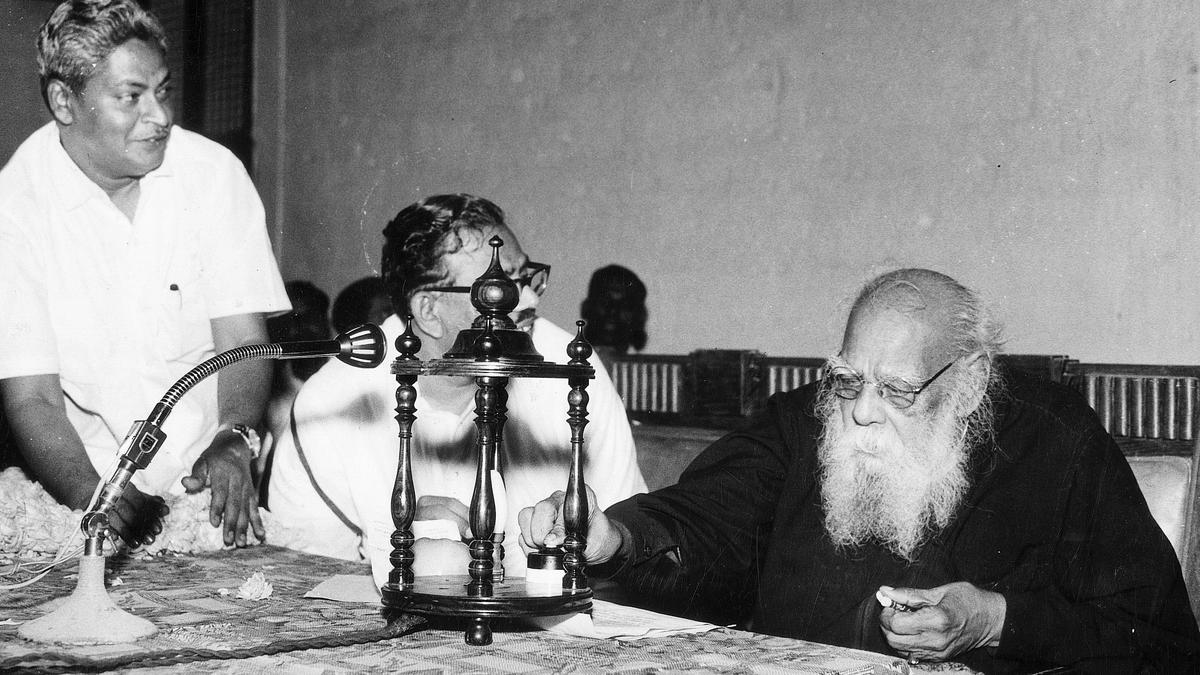
How courts saw Periyar’s 1953 act of breaking a clay Ganesha ‘idol’
The Hindu
Periyar E.V. Ramasamy's 1953 clay 'idol' breaking of Lord Pillaiyar sparks legal battle & Supreme Court ruling.
On the evening of May 27, 1953, Periyar E.V. Ramasamy, founder of the Dravidar Kazhagam (DK), broke a clay ‘idol’ of Lord Pillaiyar or Ganesha, at a public meeting in Town Hall Grounds in Tiruchi.
Offended by this S. Veerabadran Chettiyar, a Saivite, filed a complaint against Ramasamy and two others before the Additional First Class Magistrate, Tiruchi. He alleged that before breaking the idol, the DK leader made a speech, and expressly stated he intended to insult the feelings of the Hindu community with his actions. The other two accused abetted and aided him. This caused “terror-commotion in the mind of the Saivite Section” of the Hindu Community. Chettiyar said this act attracted offences under Sections 295 and 295A of the Indian Penal Code (IPC).
However, the magistrate, on receipt of a police report, dismissed the petition holding that the image broken by Periyar cannot be held as “sacred”. The magistrate observed, “The mud figure of Ganesha alleged to have been broken by the accused is not an object held sacred or worshipped by any class of persons. Simply because it resembled the God Ganesha, held in veneration by a section, it cannot become an object held sacred.”
Interestingly, the magistrate pointed out, “Even a Ganesha idol abandoned by the people as unworthy of worship loses its sanctity, and it is no longer an object held sacred by anybody, since such given up idols are found in several places of defilement. It is not an offence if a person treads on any such abandoned idol. Therefore, the breaking of mud figure of Ganesha does not amount to an offence under Section 295 of the IPC.”
The magistrate said the speeches delivered by the accused “with deliberate and malicious intention of outraging religious feelings of a community” no doubt amounted to an offence under Section 295 A of the IPC. However, for an offence under this section, it warranted the sanction of the government. In the absence of such, there was no ground to proceed against the accused.
Chettiyar then moved the Sessions Court seeking to prosecute Periyar for the offence under Section 295 alone. In January 1954, the judge concurred with the order of the magistrate and dismissed the petition. “The particular image (idol) broken was the private property of the accused and was not in itself an object held sacred by any class of persons; nor do I think that idol breaking by a non-believer can reasonably be regarded by a believer as an insult to his religion,” the judge said. He held the ingredients of Section 295 IPC “are therefore not made out”.
Thereafter, Chettiyar filed an appeal before a single judge in the Madras High Court. He too agreed with the lower courts and refused to order further inquiry. In the course of his judgment, he discussed the question whether a mud image of God Ganesha, came within the scope of the words “any object held sacred by any class of persons” in Section 295 of the IPC, and he answered the question in the negative.













